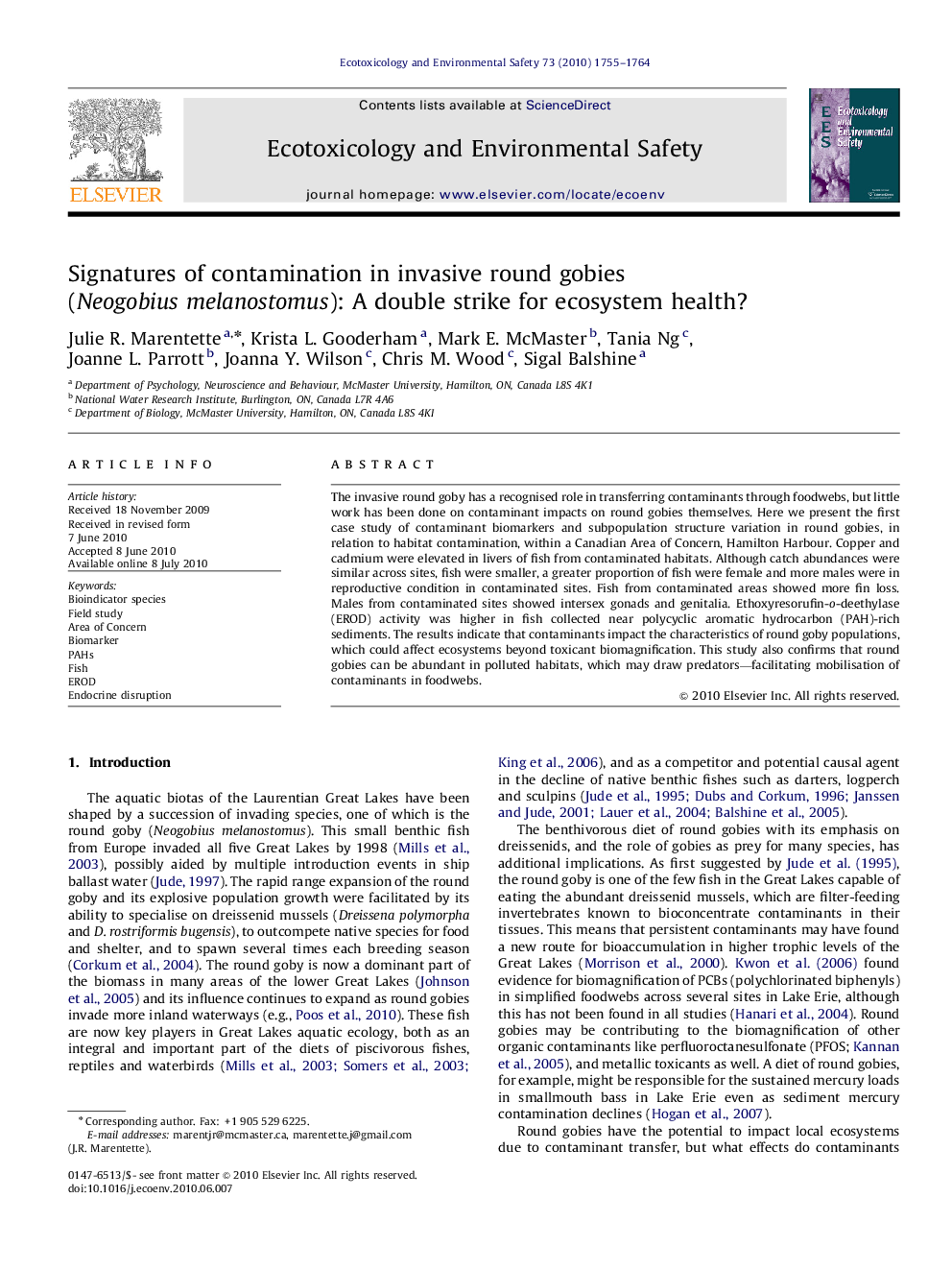| Article ID | Journal | Published Year | Pages | File Type |
|---|---|---|---|---|
| 4421735 | Ecotoxicology and Environmental Safety | 2010 | 10 Pages |
The invasive round goby has a recognised role in transferring contaminants through foodwebs, but little work has been done on contaminant impacts on round gobies themselves. Here we present the first case study of contaminant biomarkers and subpopulation structure variation in round gobies, in relation to habitat contamination, within a Canadian Area of Concern, Hamilton Harbour. Copper and cadmium were elevated in livers of fish from contaminated habitats. Although catch abundances were similar across sites, fish were smaller, a greater proportion of fish were female and more males were in reproductive condition in contaminated sites. Fish from contaminated areas showed more fin loss. Males from contaminated sites showed intersex gonads and genitalia. Ethoxyresorufin-o-deethylase (EROD) activity was higher in fish collected near polycyclic aromatic hydrocarbon (PAH)-rich sediments. The results indicate that contaminants impact the characteristics of round goby populations, which could affect ecosystems beyond toxicant biomagnification. This study also confirms that round gobies can be abundant in polluted habitats, which may draw predators—facilitating mobilisation of contaminants in foodwebs.
